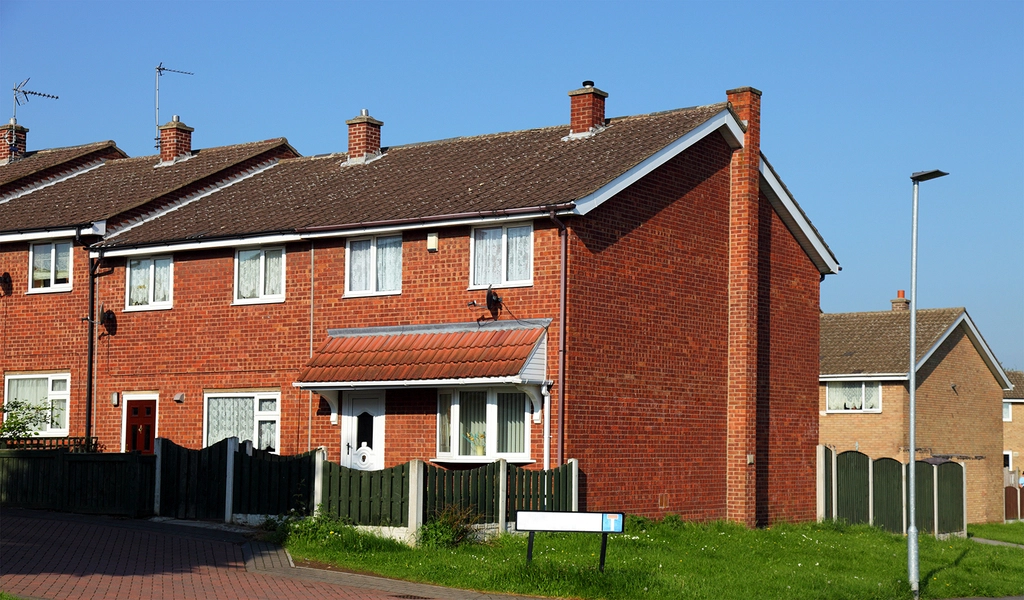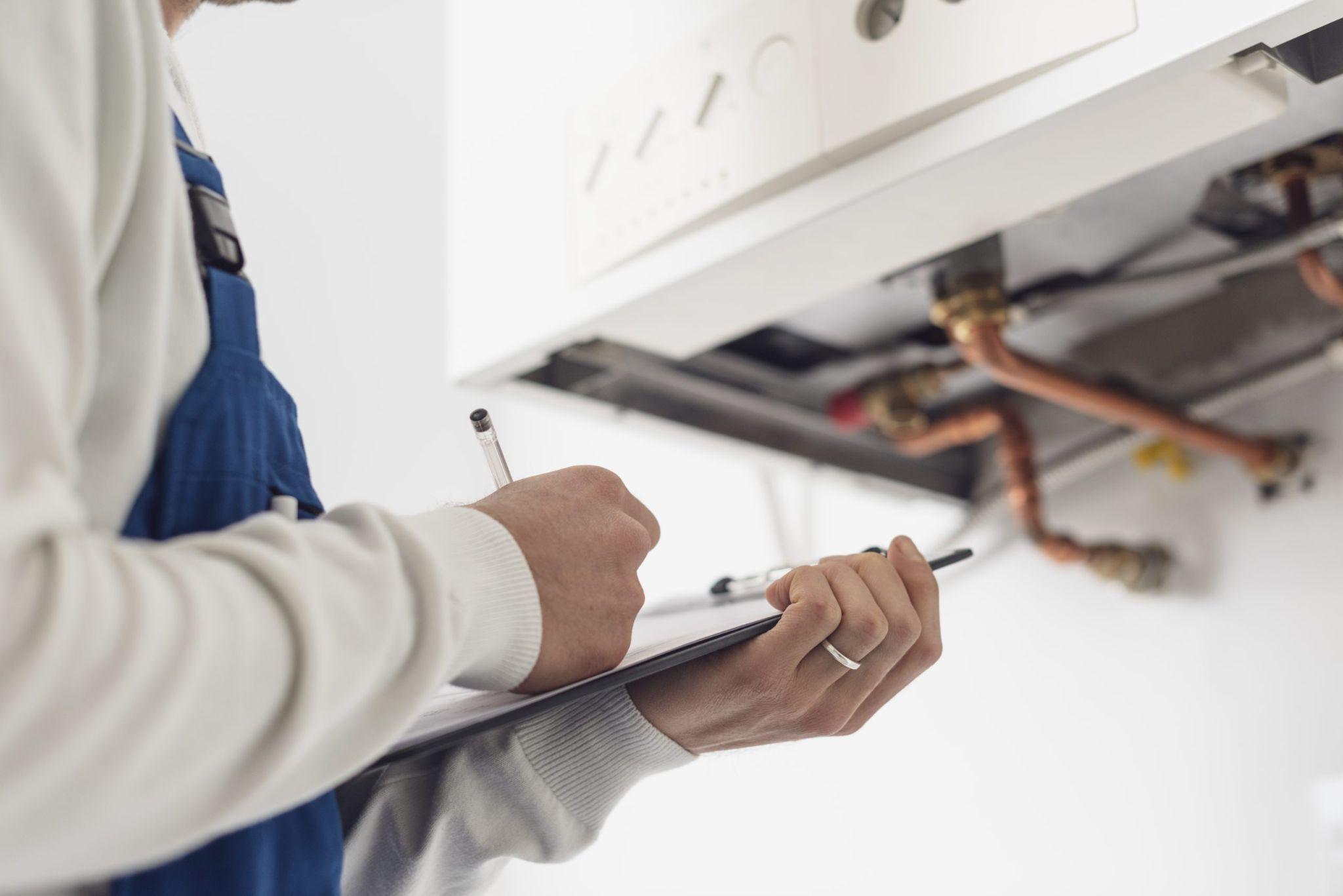Learning
How To Hack WiFi Password: Unlocking The Secrets Of Wireless Networks

How To Hack WiFi Password: Wireless networks have become an integral part of our lives, offering convenience and flexibility in connecting our devices to the internet.
However, with the increasing number of WiFi-enabled devices and the rise of cyber threats, it’s essential to ensure the security of your wireless network.
In this guide, we will explore the topic of hacking WiFi passwords from an ethical standpoint, providing insights into the existing vulnerabilities and steps you can take to protect your network.
Whether you’re a concerned homeowner or an IT professional, this article will equip you with the knowledge to safeguard your WiFi connection effectively.
How to Hack WiFi Password
So, let’s unlock the secrets and explore how to hack WiFi passwords.
Understanding the Risks and Legal Implications
Before diving into the technical aspects, it’s crucial to understand the risks and legal implications associated with hacking WiFi passwords.
Unauthorized access to someone’s WiFi network is illegal in most jurisdictions, as it violates privacy and security laws. Engaging in such activities without proper authorization can result in severe penalties and legal consequences.
It’s essential to emphasize that this guide aims to educate users about potential network vulnerabilities and how to protect against them, rather than promoting illegal activities.
Common Methods Used for WiFi Hacking
WiFi hacking techniques can vary, but they generally exploit vulnerabilities in wireless network security protocols and configurations.
While we won’t provide detailed instructions on illegal hacking methods, it’s important to be aware of the common techniques used by malicious actors to compromise WiFi passwords.
Understanding these methods will help you identify potential vulnerabilities and take appropriate countermeasures. Some common WiFi hacking methods include:
- Brute Force Attacks: In a brute force attack, hackers use automated software to systematically try all possible combinations of passwords until the correct one is found.
- Dictionary Attacks: Dictionary attacks involve using a precompiled list of commonly used passwords or words from dictionaries to attempt to gain unauthorized access.
- Phishing: Phishing attacks aim to trick users into revealing their WiFi passwords by impersonating legitimate websites or networks.
- Packet Sniffing: By capturing and analyzing network traffic, attackers can extract sensitive information, including passwords, from unsecured WiFi networks.
- Exploiting Default Configurations: Many WiFi routers come with default usernames and passwords. Hackers can exploit this by attempting to log in using the default credentials.
- WPS Vulnerabilities: The Wi-Fi Protected Setup (WPS) feature, intended for easy device pairing, can be exploited by hackers to gain access to WiFi networks.
Securing Your WiFi Network
Now that we’ve covered the risks and common hacking methods let’s focus on securing your WiFi network to prevent unauthorized access.
By implementing the following measures, you can significantly enhance the security of your wireless connection:
Change Default Router Credentials
The manufacturer typically provides default usernames and passwords when setting up a new WiFi router. Leaving these defaults unchanged makes it easier for attackers to gain access.
Make sure to change the default credentials to a strong and unique combination of characters, including uppercase and lowercase letters, numbers, and special symbols.
Use Strong Encryption

Encryption plays a crucial role in securing your WiFi network. Always opt for the latest encryption standard supported by your router, such as WPA2 or WPA3.
Avoid using outdated and less secure encryption protocols like WEP (Wired Equivalent Privacy), as they can be easily cracked.
Enable Network Firewall
Enabling a network firewall adds an extra layer of security to your WiFi network. Firewalls monitor incoming and outgoing network traffic, blocking suspicious or unauthorized access attempts.
Most modern routers have built-in firewall features that can be enabled through the router’s administration settings.
Disable Remote Management
Many routers allow remote management, allowing you to remotely access and configure your router settings.
However, leaving this feature enabled can expose your network to potential attacks.
It’s recommended to disable remote management unless absolutely necessary, and even then, make sure to use strong passwords and enable additional security measures like VPN (Virtual Private Network) access.
Implement MAC Address Filtering
Every device connected to a WiFi network has a unique MAC address identifier.
MAC address filtering allows you to create a whitelist of authorized devices, blocking any device with an unrecognized MAC address from accessing your network.
While this method is not foolproof, it adds an extra layer of protection by limiting access to your WiFi network.
Update Router Firmware Regularly

Router manufacturers often release firmware updates to address security vulnerabilities and improve performance.
Regularly checking for and installing firmware updates is essential to protect your router against the latest threats. Refer to your router’s user manual or the manufacturer’s website for instructions on how to update the firmware.
Use a Strong and Unique WiFi Password
Perhaps the most crucial step in securing your WiFi network is choosing a strong and unique password.
A strong password should be at least 12 characters long and include a combination of uppercase and lowercase letters, numbers, and special symbols.
Avoid using common phrases or easily guessable information such as your name or address.
Additionally, ensure you use a different password for your WiFi network than other accounts or devices.
Conclusion
Securing your WiFi network is of utmost importance in today’s interconnected world.
By understanding the risks, common hacking methods and implementing effective security measures, you can protect your wireless network from unauthorized access and potential security breaches.
Remember to change default credentials, use strong encryption, enable firewalls, update firmware regularly, and choose strong and unique passwords.
Additionally, remain cautious when connecting to public WiFi networks and educate yourself about the latest security practices.
By taking these steps, you can enjoy the benefits of WiFi connectivity while keeping your personal information and devices secure.
RELATED CTN NEWS:
Instagram Bio Ideas: Unlocking Creativity And Captivating Audiences
8 Best AI Music Generators In 2023: How Do They Work & Benefits?

Learning
First-Time Buyer’s Guide to the UK Property Market

Entering the UK property market as a first-time buyer can feel both exciting and daunting. The process is filled with potential pitfalls and complex decisions, but with the right guidance, it can be navigated smoothly. The estate agents in Yorkshire demystify the journey from the initial decision to buy a home to the moment you step over the threshold of your new property.
Understanding Your Financial Position
The first and perhaps most crucial step in the home-buying process is understanding your financial situation. This includes assessing your savings, income, and current debts. Here’s how you can prepare:
1. Deposit: Generally, you’ll need at least 5% of the property price as a deposit, though aiming for 10% or more can provide better mortgage rates.
2. Income and Expenses: Use a budget planner to assess your monthly income against your expenses. This will help you understand how much you can afford in monthly mortgage repayments.
3. Credit Score: Lenders will evaluate your credit score to determine your mortgage eligibility. So it’s important to have a good credit score, and you should work on it if required.
4. Mortgage Options: Speak to a mortgage advisor to understand different types of mortgages, such as fixed-rate, variable-rate, and help-to-buy schemes.
Getting a Mortgage Agreement in Principle
A Mortgage Agreement in Principle (AIP) is a statement from a lender indicating how much they’ll likely lend you. You will be a more attractive buyer with an AIP as it shows sellers you’re serious and financially prepared.
Deciding What You Want
Before you start viewing properties, it’s essential to know what you’re looking for. Consider the following factors:
1. Location: Proximity to work, schools, public transport, and amenities are key. Research neighbourhoods to find the best fit for your lifestyle.
2. Property Type: Decide whether you want a flat, terraced house, semi-detached, or detached property. Each has its pros and cons.
3. Must-Haves: Make a list of non-negotiables, such as the number of bedrooms, garden size, and parking facilities.
4. Future Proofing: Consider your future needs. Are you planning to start a family? Do you need space for a home office?
Starting the Property Search
With a clear idea of what you’re looking for, you can begin your property search. Here are some tips:
1. Use Online Portals: Websites like Rightmove, Zoopla, and OnTheMarket are excellent starting points. Set up alerts to get notified of new listings that meet your criteria.
2. Visit Estate Agents: Register with local estate agents who can provide insights into the market and inform you of new properties before they’re listed online.
3. Attend Viewings: Don’t rush this part. Visit several properties to get a feel for what’s available in your price range.
Making an Offer
Once you find a property you love, it’s time to make an offer. Here’s how to approach it:
1. Research: Check the selling prices of similar properties in the area to gauge a fair offer.
2. Negotiate: Don’t be afraid to negotiate. The starting point is most usually the asking price.
3. Conditions: You might include conditions in your offer, such as the inclusion of certain fixtures or a specific moving date.
The Legal Process
If your offer is accepted, the legal process begins. You’ll need a solicitor or licensed conveyancer to handle the legalities. Here’s what to expect:
1. Conveyancing: This is the legal transfer of property ownership. Your solicitor will handle this, including conducting searches, dealing with the Land Registry, and transferring the funds.
2. Surveys and Inspections: Arrange for a property survey to check for structural issues. There are different types of surveys, from basic condition reports to full structural surveys.
3. Mortgage Finalisation: Once the survey is complete and satisfactory, your mortgage can be finalised.
4. Exchange of Contracts: This is when the sale becomes legally binding. You’ll pay your deposit at this stage.
5. Completion: On the agreed completion date, the remaining money is transferred, and you receive the keys to your new home.
Moving In
Moving day can be hectic, but planning can ease the stress:
1. Hire a Removal Company: Book a reliable removal company well in advance. Discover the best deals by getting quotes from multiple companies.
2. Pack Strategically: Label your boxes by room and keep essential items accessible.
3. Notify Utilities and Change Address: Inform your utility providers of your move date and update your address with banks, the DVLA, and other important institutions.
Settling In
Get settled. Introduce yourself to the neighbours, familiarise yourself with the local area, and really start to make the place your own.
Here are a few final tips:
1. Safety Checks: Make sure that your smoke alarms and carbon monoxide detectors are working, and make sure that you know where the gas and electricity meters are located.
2. Maintenance Plan: Keep a record of the smooth functioning of your new home with a maintenance schedule, complete with regular checks and seasonal tasks.
3. Personal Touches: Add personal touches to make the space feel like home. This can be from putting up family photos or redoing the decoration in your rooms.
Conclusion
Buying your very first home in the UK is most definitely a milestone, difficult and full of challenges but rewarding in the end. Such a philosophy guides you in understanding finances and knowing what you want to achieve from detailed research, and seeking professional advice that confidently helps you navigate the property market. Yes, the journey may have its hurdles, but in the end—owning your own home—the reward will be worth the effort. Welcome to your new chapter!
SEE ALSO: Conquer the Chaos: Hacks to Clean Your Home in Half the Time
Learning
5 Health Benefits of Regular Pedicures

There’s nothing quite like a pedicure to keep your feet looking and feeling their best, but did you know that pedicures do more than simply enhance the appearance of your feet? Many people don’t realize that regular pedicures can come with a wide range of health benefits that can promote the well-being of your feet, so here are some ways that your routine pedicure keeps both your toenails and feet in the best condition possible!
Smoother Skin
One of the biggest misconceptions about pedicures is that they only cater to and look after your toenails. While you’ll definitely be leaving each session with a fresh coat of nail polish, your pedicure can also do wonders for the health of your skin. Aside from trimming and shaping your nails and cuticles, you’ll notice that your nail technician also dedicates a few steps to the skin of your feet.
After inspecting your feet and looking for any issues or imperfections that may need to be addressed, your technician will work on an exfoliating scrub to remove any dead skin cells. This step may also be aided by a foot file, which can be used to buff away any calluses and other problem areas manually.
Softer Skin
After your nail technician addresses all the problem areas of your feet and removes any unwanted dead skin cells, he or she will often massage in a moisturizing product, such as lotion, cream, or butter, to ensure that your skin is properly moisturized. These products contain skin-loving ingredients that will ensure that your feet have everything they need to look and feel their best so that you can walk out of your pedicure with a renewed sense of confidence.
Healthier Nails
After your pedicure session, your nails will not only look better due to the fresh coat of nail polish, but they’ll also be healthier and stronger. This is because your nail technician takes their time to ensure that your nails are properly looked after through steps that include deep cleaning, nail trimming, nail filing, and cuticle care. All of these things work together to prevent issues like ingrown nails from occurring, all the while improving the appearance of your nails.
Increased Blood Circulation
While the specific steps included in your pedicure will depend on the beauty salon, most pedicures will have a massage step somewhere in the mix. One of the often overlooked benefits of these massages is the increased blood circulation, which can deliver more nutrients and oxygen to your feet and nails, promoting their health and appearance. Aside from that, better blood flow means reduced tension and soreness, as well as better distributed heat throughout your body.
Reduced Infections
A significant amount of dirt and bacteria can build up on your feet without you even realizing it, but pedicures can be a great way to prevent these from happening in the first place. The exfoliation step of a pedicure removes dead skin cells as well as all the debris that may have accumulated underneath, and the deep cleaning of your toenails and cuticles also gets rid of any impurities that may have slipped beneath them, which can stop infections from happening.
These are some of the many health benefits that you can look forward to at your next pedicure appointment. However, it’s worth noting that you need to book regular sessions to truly reap all the rewards. This can be difficult, especially when you don’t feel like driving to your nearest nail salon after a long day, but the good news is that you can enjoy the salon experience in the comfort of your own home with a home pedicure service.
Learning
Commercial Boiler Installation Services London

For businesses in the bustling city of London, having a reliable heating system is crucial. Whether you’re opening a new office, expanding your current premises, or simply upgrading an outdated system, commercial boiler installation services for businesses in London are essential to ensure your operations run smoothly and efficiently. Proper installation and maintenance of commercial boilers can make a significant difference in energy efficiency, cost savings, and the overall comfort of your workspace.
The Importance of Professional Installation
When it comes to installing a commercial boiler, professional expertise is paramount. Here’s why:
- Efficiency and Performance: Professional installation ensures that your boiler operates at peak efficiency, reducing energy consumption and lowering utility bills. A well-installed boiler can effectively meet the heating demands of your business without unnecessary energy waste.
- Safety: Commercial boilers are complex systems that require precise installation to operate safely. Professional installers adhere to stringent safety standards and regulations, minimizing the risk of accidents and ensuring the safety of your employees and premises.
- Compliance with Regulations: Commercial properties are subject to various building codes and regulations. Professional installers are well-versed in these requirements and ensure that your boiler system complies with all local laws and standards.
- Longevity and Reliability: Proper installation is critical to the longevity and reliability of your boiler. A professional installation can prevent common issues such as leaks, pressure problems, and system failures, ensuring that your boiler runs smoothly for years to come.
Key Considerations for Commercial Boiler Installation
When planning for a commercial boiler installation, several factors need to be considered:
- Type of Boiler: The type of boiler you choose will depend on your business’s specific needs. Options include gas boilers, oil boilers, and electric boilers, each with its own set of advantages. Consulting with a professional can help you determine the best choice for your business.
- Sizing and Capacity: The boiler’s size and capacity must match the heating demands of your commercial space. An undersized boiler will struggle to meet your needs, while an oversized one will lead to inefficiencies and higher costs.
- Location: The placement of your boiler affects its efficiency and accessibility for maintenance. Professional installers can help you choose the optimal location for your boiler.
- Integration with Existing Systems: If you’re upgrading or replacing an existing boiler, it’s essential to ensure compatibility with your current heating system. Professional installers can seamlessly integrate the new boiler with your existing setup.
Choosing the Right Installation Service

Selecting the right installation service provider is crucial to the success of your boiler installation project. Consider the following when making your choice:
- Experience and Expertise: Look for a provider with a proven track record in commercial boiler installations. Experienced installers can handle the complexities of commercial systems and provide high-quality workmanship.
- Reputation: Check reviews and testimonials from previous clients to gauge the provider’s reliability and customer satisfaction.
- Comprehensive Services: Choose a provider that offers a full range of services, including installation, maintenance, and repair. This ensures that all your boiler needs are met by a single, trusted source.
In London, ROWLEN is a reputable name known for delivering top-notch commercial boiler installation services. Their team of experts is dedicated to providing efficient, safe, and compliant installations tailored to the unique needs of businesses.
Conclusion
Investing in professional commercial boiler installation services for businesses in London is essential for ensuring efficiency, safety, and long-term reliability. By choosing an experienced and reputable service provider like ROWLEN, you can rest assured that your heating system will be installed correctly and maintained to the highest standards. Proper installation not only enhances the performance of your boiler but also contributes to the overall comfort and productivity of your business environment.
SEE ALSO:
-

 News4 years ago
News4 years agoLet’s Know About Ultra High Net Worth Individual
-
Entertainment2 years ago
Mabelle Prior: The Voice of Hope, Resilience, and Diversity Inspiring Generations
-
News11 years ago
Enviromental Groups Tell Mekong Leaders Lao Dam Evaluation Process Flawed
-

 Health4 years ago
Health4 years agoHow Much Ivermectin Should You Take?
-

 Tech3 years ago
Tech3 years agoTop Forex Brokers of 2023: Reviews and Analysis for Successful Trading
-

 Lifestyles3 years ago
Lifestyles3 years agoAries Soulmate Signs
-

 Entertainment3 years ago
Entertainment3 years agoWhat Should I Do If Disney Plus Keeps Logging Me Out of TV?
-

 Health3 years ago
Health3 years agoCan I Buy Ivermectin Without A Prescription in the USA?